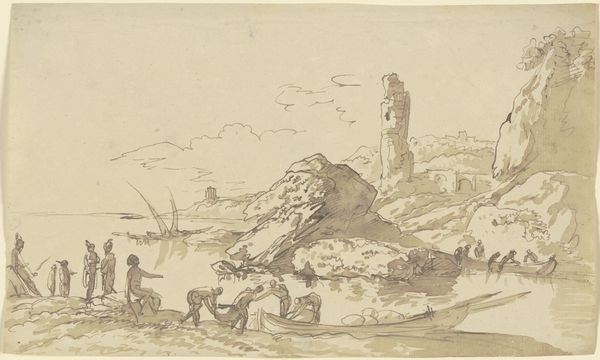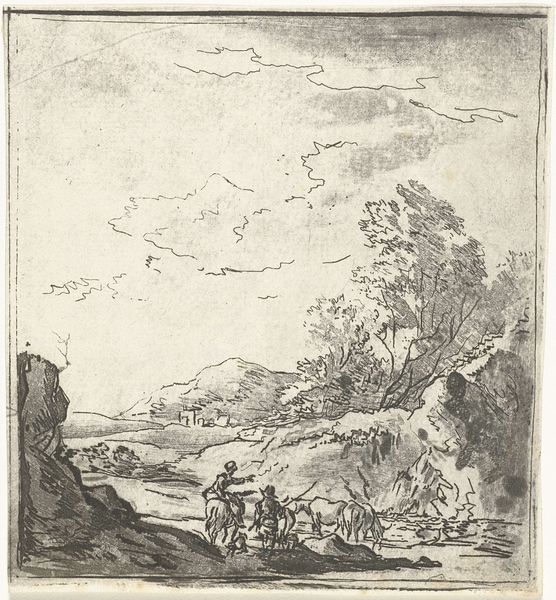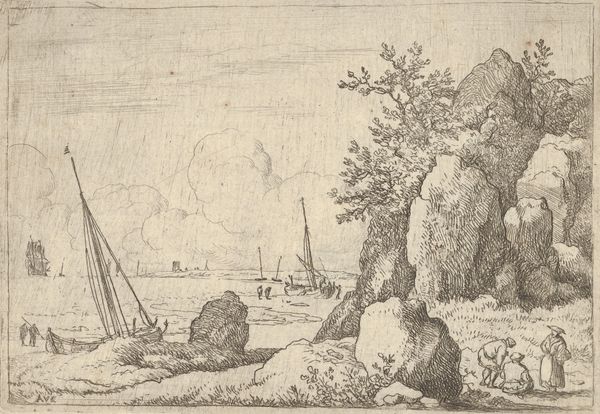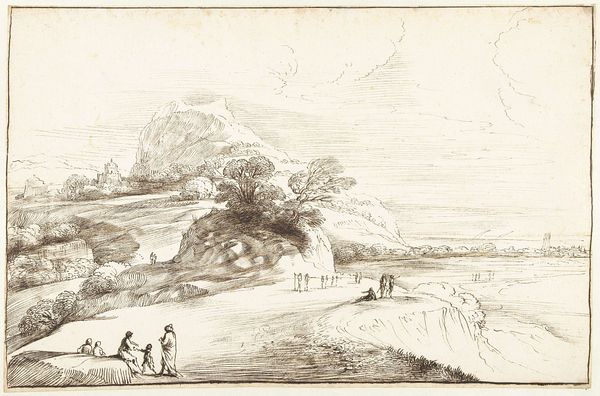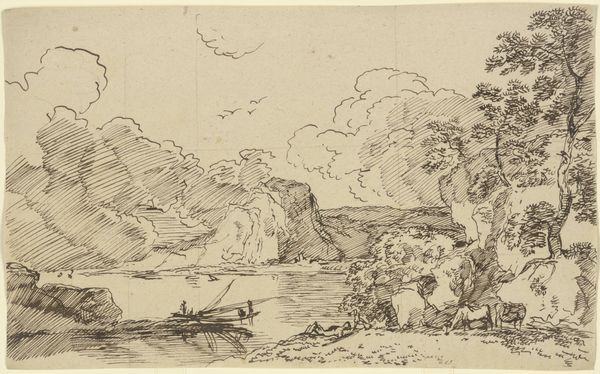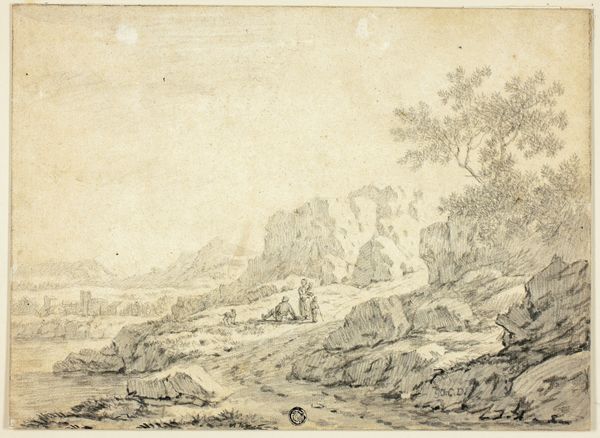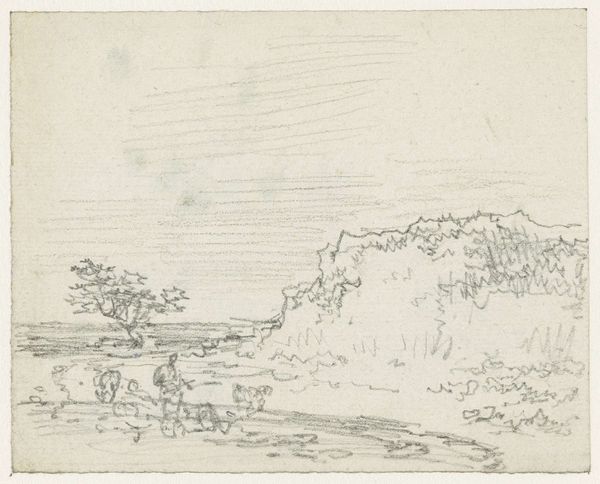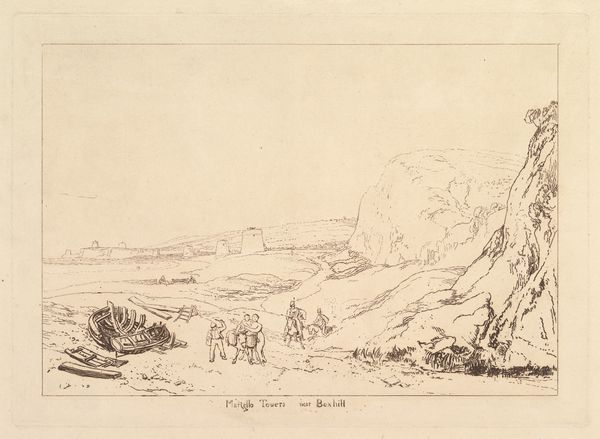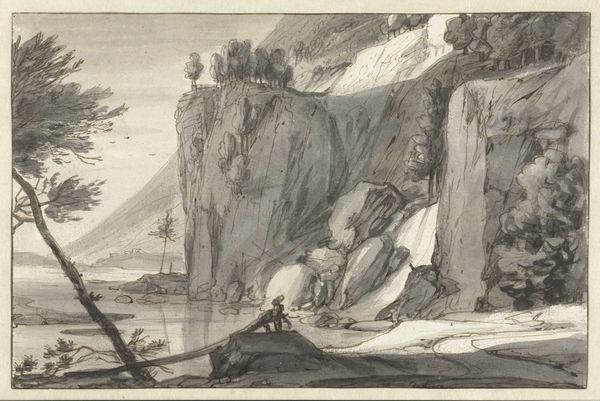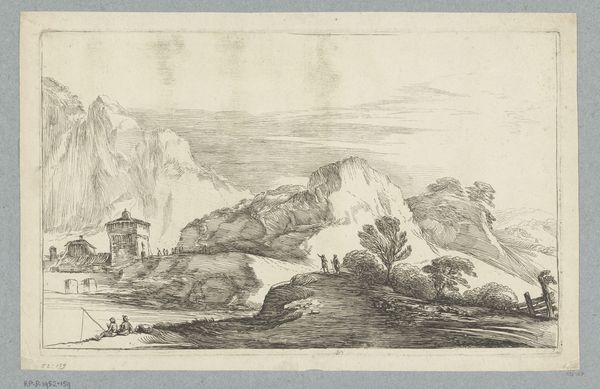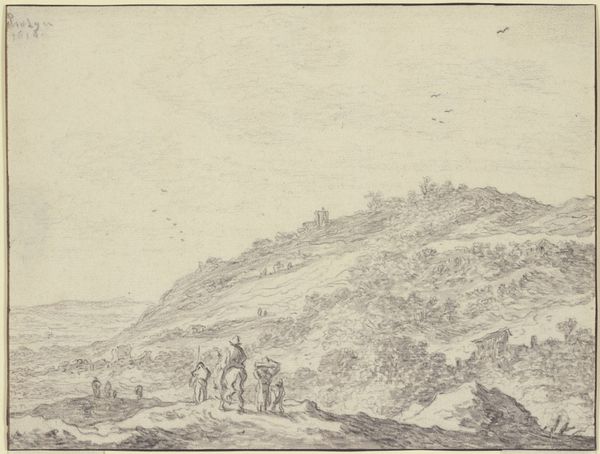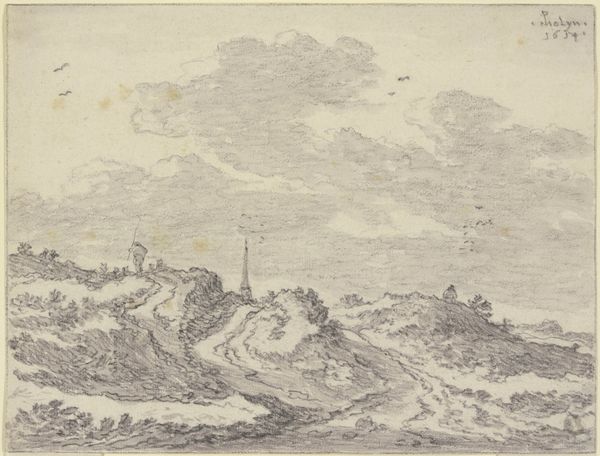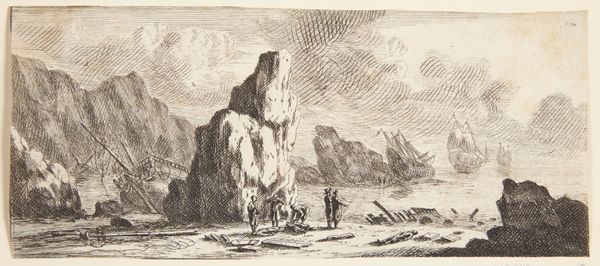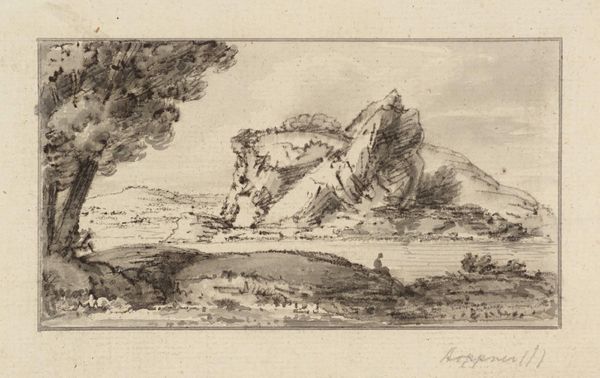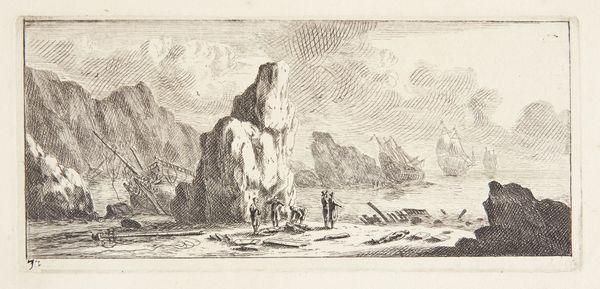
Bei einem großen Fels ein Boot, weiter hinten ein großes Schiff
0:00
0:00
drawing, paper, ink, pencil
#
drawing
#
baroque
#
pencil sketch
#
landscape
#
etching
#
paper
#
ink
#
pencil
#
cityscape
#
watercolor
Copyright: Public Domain
Curator: This is a pencil and ink drawing by Ludolf Backhuysen, titled "Bei einem großen Fels ein Boot, weiter hinten ein großes Schiff," which translates to "A Boat by a Large Rock, a Large Ship Further Back". It is held here at the Städel Museum. Editor: It strikes me immediately as something monumental, despite its small scale. The jagged, almost aggressively drawn rock form dominates the foreground. There’s something almost sublime about it, a visual power play. Curator: The rock formation is definitely a key element, stylistically linking back to the Northern Renaissance fascination with dramatic natural forms. However, what intrigues me is how Backhuysen places maritime activity within this landscape. He was, after all, a prominent marine painter in Amsterdam during a time of significant Dutch naval power and overseas trade. Editor: And how cleverly the composition emphasizes that. Your eye travels from the prominent rock to the distant ship, following the receding plane. The drawing's lines guide you through the economic narrative. I notice the human figures near what appear to be barrels—another clue towards understanding maritime activities of trade in his portrayal of place and value. Curator: Precisely. Consider Amsterdam's central position in global trade routes. Images like these subtly reinforced Dutch mercantile identity, imbuing seascapes with not just aesthetic but also patriotic value. He transforms an otherwise straightforward landscape drawing into a statement of national identity. Editor: I’m more drawn to the way the ink and pencil render light on the water and the textural contrasts: the rough rock versus the relatively smoother clouds, it plays with semiotic language to evoke feelings. These artistic choices evoke the dynamism, while the strategic layering speaks about depth. Curator: A dynamism central to the Dutch Golden Age economy itself, constantly shifting, ever in flux. Backhuysen's skill lies in mirroring this through representational means. His contribution, in essence, was visually linking these ambitions to the national consciousness. Editor: For me, it comes down to Backhuysen's keen formal awareness—an eye that manages to harness dramatic intensity from just pencil, ink and paper! Curator: Ultimately, a study offering a perspective on how a nation saw itself amidst unprecedented global changes.
Comments
No comments
Be the first to comment and join the conversation on the ultimate creative platform.
